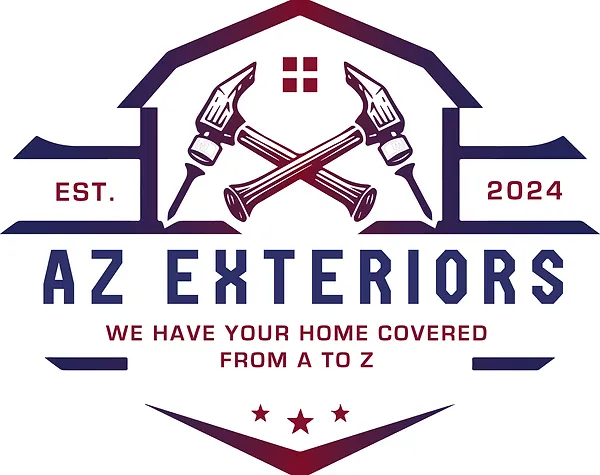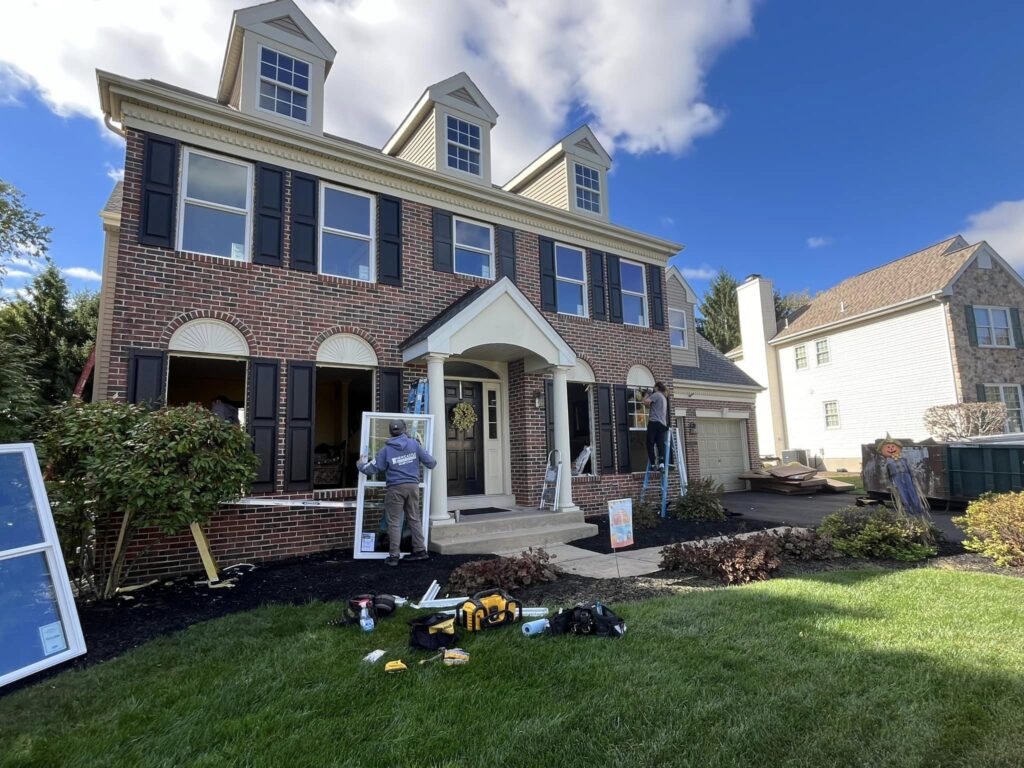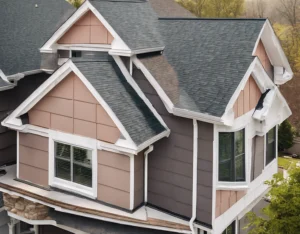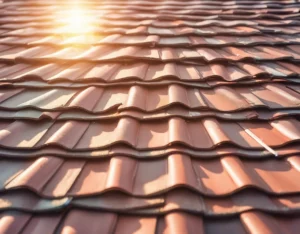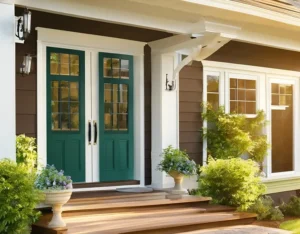First impressions count, and nothing grabs attention faster than a home’s exterior. The right Exterior Paint colors do more than freshen up a house—they can lift your curb appeal and add real value if you’re thinking about selling. For 2025, homeowners are leaning into warm earth tones, deep blues, and rich greens that make both new builds and classic homes feel fresh and inviting.
Blending natural shades with bold accent colors brings out a home’s best features and makes it stand out—in all the right ways. Choosing a palette that fits today’s trends will help your home look current and welcoming, attracting buyers who want both style and comfort. Let’s get into how to pick paint colors that not only boost appeal, but bump up your home value, too.
Understanding the Impact of Exterior Paint Colors on Home Value
Choosing the right exterior paint color does more than freshen up your house—it directly shapes how buyers value and remember your home. Every shade and accent creates a story, and the right combination can set your place apart from the rest on the street. Let’s break down how color choices influence curb appeal, buyer emotions, and what today’s data says about the best colors for getting top-dollar offers.
Curb Appeal: Why It Matters
 Photo by Jan van der Wolf , Pick Exterior Paint Colors
Photo by Jan van der Wolf , Pick Exterior Paint Colors
Curb appeal isn’t just a buzzword—it’s a deal maker or breaker. The first glimpse of a house, even from the end of the driveway, sparks an instant reaction in buyers. A home with fresh, attractive paint signals pride of ownership and low future maintenance. That means buyers see fewer obstacles and more reasons to make a strong offer.
According to real estate experts, great curb appeal can:
- Draw more interested buyers to your listing photos and open houses.
- Help your home sell faster compared to similar properties.
- Command a higher price in neighborhoods where homes compete for attention.
Well-chosen exterior colors tie together landscaping, architecture, and neighborhood surroundings. Homes painted in “safe” neutrals like white, gray, or beige often look timeless and appeal to more buyers. On the flip side, poorly chosen colors (think loud yellows or dated pastels) can turn buyers away at first glance, making your house linger on the market.
Color Psychology and Homebuyers
Color isn’t just visual; it’s emotional. The mix of shades on your home’s exterior sends a message, sometimes without you saying a word. Color psychology taps into how most buyers “feel” about a home, even before they step inside.
Here’s a roadmap of how popular colors influence perception:
- Blues: Signal trust, calm, and dependability—think of classic blue-gray Craftsman homes.
- Greens: Suggest balance, stability, and a connection with nature. Deep forest greens can feel sophisticated and grounded.
- Beige/Grays: Evoke cleanliness, space, and timelessness.
- Dark tones (like charcoal): Add drama, modern flair, and richness, making homes stand out in established neighborhoods.
- Black (especially doors): Seen as bold and upscale, often associated with security and luxury.
On the other hand, very bright or unusual colors—such as intense reds or oranges—can feel risky to buyers. Instead of picturing themselves living in the home, buyers may start worrying about the cost of repainting. That’s why most experts recommend sticking to inviting, fresh, and widely appealing color schemes.
Recent Data on Exterior Color and Home Sale Price
Today’s market rewards strategic color choice with hard cash. Paint trends used to be a guessing game, but now, there’s solid data showing which colors help homes get higher offers and sell faster.
Highlights from recent research:
- A well-done exterior paint job can boost a home’s value by 2-5%, according to Revive Real Estate and other industry sources. That’s several thousand dollars on an average home.
- Neutral colors (white, beige, gray): Homes painted in these shades consistently attract more buyers and higher sale prices, as they feel move-in ready and spacious.
- Deep blues and charcoal grays: A study published by House Beautiful in 2025 found that dark gray exteriors can fetch offers $1,755 above expected value. These colors add a modern touch and look clean even as they age.
- Black doors: Zillow’s analysis shows homes with black front doors can sell for up to 2.9% more. Buyers link black doors to security, style, and a sense of luxury.
- Avoiding extremes: Very bright or odd color choices can decrease perceived value unless perfectly executed and fitting for the neighborhood.
To sum up, buyers judge homes from the outside first. By focusing on colors with proven appeal and understanding how those hues play on emotions, you’ll put your home in position to sell quickly—and for a higher price.
Top Exterior Paint Color Trends for 2025 That Add Value
Choosing an exterior paint color is more than picking what looks nice on a paint swatch—it’s about finding shades that lift your curb appeal, attract buyers, and keep your home looking fresh for years. For 2025, color trends are leaning toward both timeless neutrals and richer, nature-inspired colors. Layer in bold accents for trim and doors, and you get a look that feels fresh but still fits a wide range of homes. Here’s what’s winning big with designers, real estate pros, and savvy homeowners right now.
Timeless Neutrals: Whites, Beiges, and Greiges
When you want your home to appeal to the widest audience, it’s hard to beat classic neutrals. Whites, beiges, and greiges (that perfect mix of gray and beige) are still leading the pack in 2025, and for good reason.
- Whites like Benjamin Moore’s Simply White or Sherwin-Williams’ Snowbound always look crisp, clean, and bright. They work on everything from craftsman bungalows to new modern builds, letting the lines and details of your home shine.
- Beiges and soft taupes—think Sherwin Williams’ Accessible Beige or Revere Pewter—provide warmth without overpowering the home’s original charm. Beiges complement lush landscaping, brick, or stone, and never go out of style.
- Greiges bridge the gap between cool and warm tones. They look updated yet timeless and adapt easily to different architectural styles, from traditional to contemporary.
Neutrals make it easy for buyers to picture themselves moving right in. They also provide a backdrop that lets landscaping, shutters, and accent colors pop without clashing or feeling overwhelming.
Nature-Inspired Hues: Sage Greens, Warm Earth Tones, and Blues
A growing number of designers and homeowners are choosing shades that look lifted right from nature. These earthier, muted hues are a safe bet for boosting value—while making your home feel welcoming and on trend.
 Photo by rotekirsche 20
Photo by rotekirsche 20
- Sage greens and olive tones blend right in with natural landscapes and wooded lots. These shades are popping up everywhere as a fresh alternative to gray—cozy yet calm, they look great on both new construction and vintage cottages.
- Warm earth tones like cedar, terracotta, and soft orange provide a sense of stability and connection to the outdoors. They add instant curb appeal, especially when paired with wood or stone elements.
- Soft and deep blues—Hale Navy, Deep Blue, and Sea Serpent—make a big statement but still feel classic. Blue feels trustworthy and relaxing, and it pairs beautifully with crisp white or natural wood accents.
Nature-inspired colors bring out the best of your architecture and the landscape, helping your home look inviting from the street or in real estate photos.
Bold Accents: Doors and Trim for Increased Value
If you want your home to stand out and look more expensive, don’t skip bold accent colors for doors and trim. Using the right pop of color can shift your curb appeal from “just nice” to “gotta see inside!”
- Front doors in navy, black, or deep reds are a modern classic. Black doors, in particular, are linked to higher sale prices because they hint at luxury and security. Navy looks fresh on anything from a colonial to a ranch.
- Contrasting trim—using deep charcoal, soft green, or creamy white—frames the house’s details and draws buyers’ eyes to unique architectural features.
- Window sashes, shutters, and porch floors in bolder colors give your home more personality and dimension, increasing its perceived value.
A well-chosen accent draws attention to the best features of your home and lets buyers know you care about the details. When balanced with neutral or earthy main colors, bold accents strike the right note between confidence and classic appeal.
How to Choose the Best Exterior Paint Colors for Your Home
Picking exterior paint might seem simple—until you stand in front of endless swatches at the store. Choosing the wrong palette can drag down curb appeal and even turn off buyers. A smart approach helps your home look current, welcoming, and valuable to a wide range of buyers. From honoring your home’s style to factoring in real climate challenges, here’s how to make choices that work.
Consider Your Home’s Architectural Style and Era
The right color scheme elevates your home’s unique design and helps it stand out for all the right reasons. Each architectural style has traditional colors that highlight its charm. Not sure what works best? Here’s a quick guide you can follow:
- Craftsman: These homes shine in earth-inspired palettes—think sage greens, muted grays, warm taupes, and rich browns. Use darker trim and natural wood finishes to highlight beams and columns. Pair with a standout front door in a deep red or navy.
- Colonial: Classic Colonials love contrast. Crisp white or off-white with black shutters and doors is timeless. For a bit more character, you can add muted blues, grays, or even soft yellow as a main color. Keep trim and windows simple and stately.
- Modern: Expect sleek lines paired with monochrome or high-contrast choices. Go for cool grays, stark whites, and black accents. Wood or stone details in light stains add interest without cluttering the clean look modern homes are known for.
- Ranch: Ranch houses favor laid-back, mid-century colors. Warm beiges, terracotta, olive greens, and muted blues deliver an inviting and easygoing vibe. Contrasting trim—maybe charcoal or soft white—can help outline wide, simple rooflines.
 Photo by Warren Griffiths
Photo by Warren Griffiths
Don’t let trends override your home’s architecture. Use color to highlight its best features, not hide them.
Analyze Neighborhood Trends and Homebuyer Preferences
Choosing an exterior color isn’t only about your taste. Before making a decision, take a walk through your neighborhood—or pull up some real estate sites online. Notice which homes sell fast and which colors repeat. Buyer’s preferences for 2025 show some clear patterns:
- Move-in readiness: Buyers today want homes that look finished. Fresh, neutral paint signals less work after closing.
- Broad appeal: White, gray, beige, and blue still rank highest with buyers across all age groups. These shades feel safe and welcoming but don’t look dated.
- Touch of personality: You can add a bolder door or accent, but think about resale. If you love a bright color, use it for flowers, not the main house.
- Community style: Some neighborhoods have color guidelines. Double-check any rules so your investment pays off—and keeps you out of trouble with the HOA.
Balance your personality with what appeals to buyers so your home feels inviting but never risky.
Assess Natural Light, Climate, and Surroundings
Colors look different in strong sunlight, dense shade, or foggy mornings. Climate and environment matter as much as taste:
- Sun Exposure: Lighter colors reflect heat, making them perfect for hot, sunny climates. Too much sun can fade bright or dark shades, so use fade-resistant brands if your home faces the south or west.
- Rain and Humidity: Moist climates demand mildew-resistant paint. Stick to paint designed for “wet weather” if you live in a coastal or forested area.
- Cold and Snow: Warm earth tones, deep greens, and browns look inviting against white snow and cloudy winters. Special formulations resist cracking in freeze-thaw cycles.
- Surroundings: Let your landscape lead the way. Homes surrounded by trees look great painted in greens, browns, or muted blues. In open areas, whites and beiges keep things bright. Use color to tie your home into the setting, not fight with it.
Here are quick environmental tips:
- Always paint large test patches and watch them at different times of day.
- Choose UV-resistant, moisture-sealing paint for years of curb appeal.
- Consider eco-friendly formulas—low-VOC or zero-VOC paints keep the air and your home healthier.
Smart color choices look good, last longer, and help keep your maintenance low—all attractive features for potential buyers.
Practical Steps and Pro Tips for Selecting and Applying Exterior Paint
Upgrading your home’s exterior color can boost curb appeal and value—but don’t rush the decisions or the process. With a few smart steps and some real-world advice, you’ll set your project up for long-lasting beauty. Here’s what separates a paint job that pops (and lasts) from one that flakes out.
Sample and Test Colors In Context
Making your pick in the paint aisle is a gamble. Samples on a swatch look completely different once they’re on your home and exposed to sun, shade, greenery, and the ever-changing light of day.
 Photo by Craig Adderley
Photo by Craig Adderley
Before finalizing your choice:
- Buy small cans of your top contenders. Don’t just trust paper swatches.
- Paint large test patches—at least 24×24 inches—on different sides of your home.
- Check colors at multiple times of day. Light changes everything. What looks warm in morning sun might read totally different in late afternoon or under cloudy skies.
- Observe next to key features. See how test colors look near brick, stone, woodwork, and landscaping.
- Watch for at least a few days. Temperature, moisture, and dust can all influence final appearance.
Paint brands now sell peel-and-stick samples for easy testing and mess-free trials on siding or trim. If you want to be absolutely sure before making a big investment, this is your best insurance against disappointment—and costly mistakes.
Choose Quality Paints for Durability and Longevity
Anyone who’s spent time scraping peeling paint off a house knows cheap paint is never a bargain. The latest testing from trusted names like Consumer Reports agrees: high-quality paints withstand the elements, keep their colors rich, and rarely crack, fade, or mildew even after years of wear.
Key benefits of the best formulas in 2025:
- UV-Resistant: Protects color from fading and chalking, especially on sunny or south-facing walls.
- Mildew-Resistant: Crucial for damp, humid, or wooded environments where mildew grows fast.
- Weather-Adaptive: Advanced acrylics like Sherwin-Williams SuperPaint flex with material expansion and stop early cracking, even in freeze-thaw conditions.
- Eco-Friendly Options: Low-VOC or zero-VOC paints are friendlier for families and the environment without losing toughness.
Top paints recommended for 2025 include:
- Sherwin-Williams SuperPaint (all climates, strong longevity)
- Benjamin Moore Element Guard (excellent coverage, top-rated mildew resistance)
- BEHR Marquee Exterior (high UV protection, strong color hold)
- Valspar Duramax (flexible, weather-resistant)
- Glidden Premium Exterior (budget-friendly with reliable results)
Quality prep work boosts any paint’s performance. Scrape, sand, and repair problem spots before applying a primer—most high-end paints now are “paint and primer in one” for a faster, smoother job.
Coordinate with Materials and Landscaping
Picking a color you love is only part of the job. For the biggest boost in curb appeal (and value), your new paint should feel like it “belongs.” That means thinking about the big picture—how paint interacts with stone, brick, wood, and even your garden.
Here are some ways to build visual harmony:
- Match undertones. If your roof or brick has cool tones (like blue or gray), pick paint with a hint of coolness. Warm reds, browns, or creams pair better with warm-roofed or orangey bricks.
- Highlight natural features. A stone or brick base pops with a soft neutral against it. Wood siding looks rich in greens or muted earth tones, echoing the garden and trees.
- Tie in landscaping. Greenery works with nearly any palette; bold flowers stand out best against softer colors. Muted, natural paints blend seamlessly with native and drought-tolerant gardens.
2025 trends lean into earthy, organic colors—olive green, cinnamon, terracotta, soft taupe—that flow with natural landscapes, not fight against them. Accent with cream or soft black for trim, and use a warm, friendly color for the front door to invite attention without overwhelming.
Smart coordination turns your house into a beautiful backdrop for everything around it, ensuring both paint and planting look their best all year.
Common Exterior Paint Color Mistakes to Avoid
Refreshing your home’s exterior with the right colors can do wonders—but picking poorly can hurt curb appeal and even lower your home’s value. Many homeowners get tripped up by color blunders that are easy to skip with a little foresight. Here’s how to sidestep the most common pitfalls and keep your home in the “wow” zone for years to come.
Ignoring Architectural Details
Every home tells a story through its architecture. When you choose colors that ignore these built-in details, you miss the chance to make your home stand out. Architectural features—like trim, shutters, brackets, columns, and window grids—are designed to add character. If you paint them the same shade as your siding or overlook them, your house can look flat and uninspired.
- Use accent colors to highlight trim, moldings, and unique features.
- Reference your home’s original style (Craftsman, Colonial, Victorian, etc.) for color inspiration.
- Skip “one-color-fits-all” temptation. Even a subtle contrast makes windows and corners pop.
Overlooking these details is like wearing a suit with no accessories: you’re dressed, but nothing stands out. Remember, buyers notice thoughtful touches—and they often translate to higher offers.
Overly Trendy Colors
It’s tempting to jump on the latest color craze—especially when bold hues fill your Instagram feed. But exterior paint isn’t as easy to swap out as throw pillows. Bright pinks, deep navy-black shades (which are fading out for 2025), or stark whites might grab attention now but can look dated fast or alienate buyers who want something timeless.
 Photo by Matej
Photo by Matej
To avoid regret:
- Stick to classic, proven color palettes with wide appeal.
- Use trendy colors sparingly—on a door, planter, or porch swing instead of the whole house.
- Consider how quickly a bold shade might fade or clash with aging brick, stone, or landscaping.
- Think about resale now, not just personal taste.
What’s trending inside homes can change fast; outside, durability and desirability always win the long game.
Mismatched Accents and Trim
Picking a great main color is only half the job. Many exterior paint mistakes happen by mixing trim and accent shades that don’t coordinate—or worse, clash. Unmatched whites, oddly contrasting shutters, or a bold door without supporting neutrals can make even the best house look disjointed.
- Choose one undertone (warm or cool) and stick with it throughout your palette.
- Use three colors, max: a main body color, a clear trim shade, and one accent for features like the front door.
- Test sample swatches together. Sunlight shifts color perception; what works indoors can look harsh or muddy outside.
- Coordinate with immovable features—like stone, brick, or the roof—for a harmonious, intentional look.
A unified paint scheme is like a well-put-together outfit—cohesive, balanced, and always makes a good impression. Skipping this detail can be the difference between a house that looks pulled together and one that just looks “off.”
Thoughtful choices get noticed. Avoid these common mistakes and your fresh exterior color won’t just look better, it’ll help boost the value buyers see before they even step inside.
Conclusion
The right exterior colors do more than update your home—they make it inviting, memorable, and worth more to buyers. Natural-inspired tones and timeless neutrals set the stage for strong first impressions, while bold accent choices signal attention to detail and pride in ownership.
Using modern tools like virtual paint visualizers or peel-and-stick samples can save time and guarantee you’re happy with your choice before you commit. A smart, market-aware color plan will help your home stand out in photos, bring more buyers to your door, and maximize your sale price.
If you’re thinking of painting this year, use color as your secret weapon for curb appeal and value. Thank you for reading—share your own paint success stories below or let us know what palettes you’re considering for your home!
